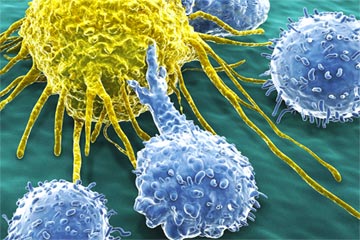Pancreatic Cancer Treatment
Overview
The pancreas lies behind the stomach and in front of the spine. There are two kinds of cells in the pancreas. Exocrine pancreas cells make enzymes that are released into the small intestine to help the body digest food. Neuroendocrine pancreas cells (such as islet cells) make several hormones, including insulin and glucagon, that help control sugar levels in the blood.
Most pancreatic cancers form in exocrine cells. These tumors do not secrete hormones and do not cause signs or symptoms. This makes it hard to diagnose this type of pancreatic cancer early. For most patients with exocrine pancreatic cancer, current treatments do not cure the cancer.
- Pancreatic cancer is the fourth leading cause of cancer-related death in both men and women in the United States.
- Incidence and mortality rates are higher in men than in women.
- Cigarette smoking is the most important risk factor for pancreatic cancer.
Some types of malignant pancreatic neuroendocrine tumors, such as islet cell tumors, have a better prognosis than pancreatic exocrine cancers.










